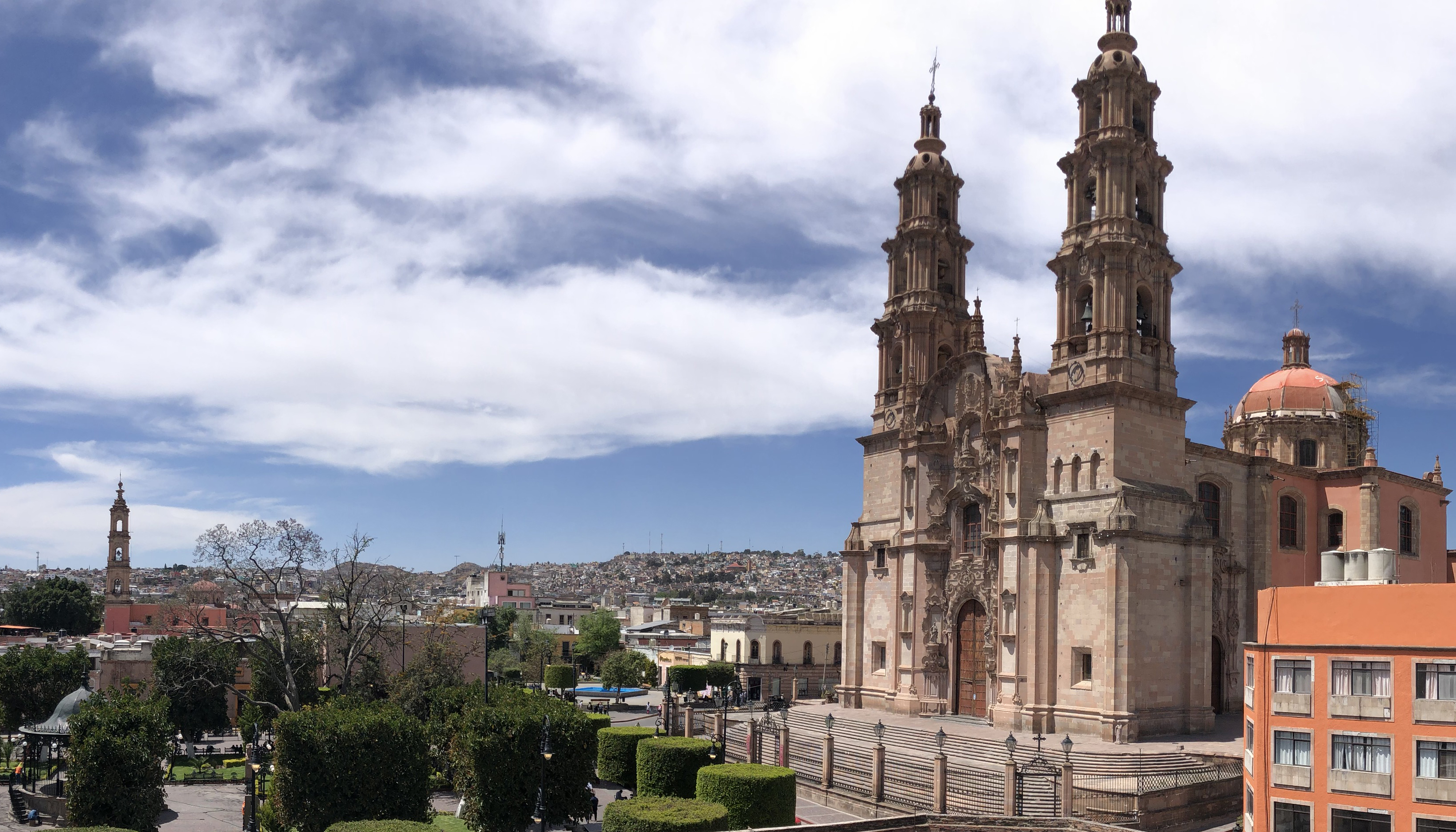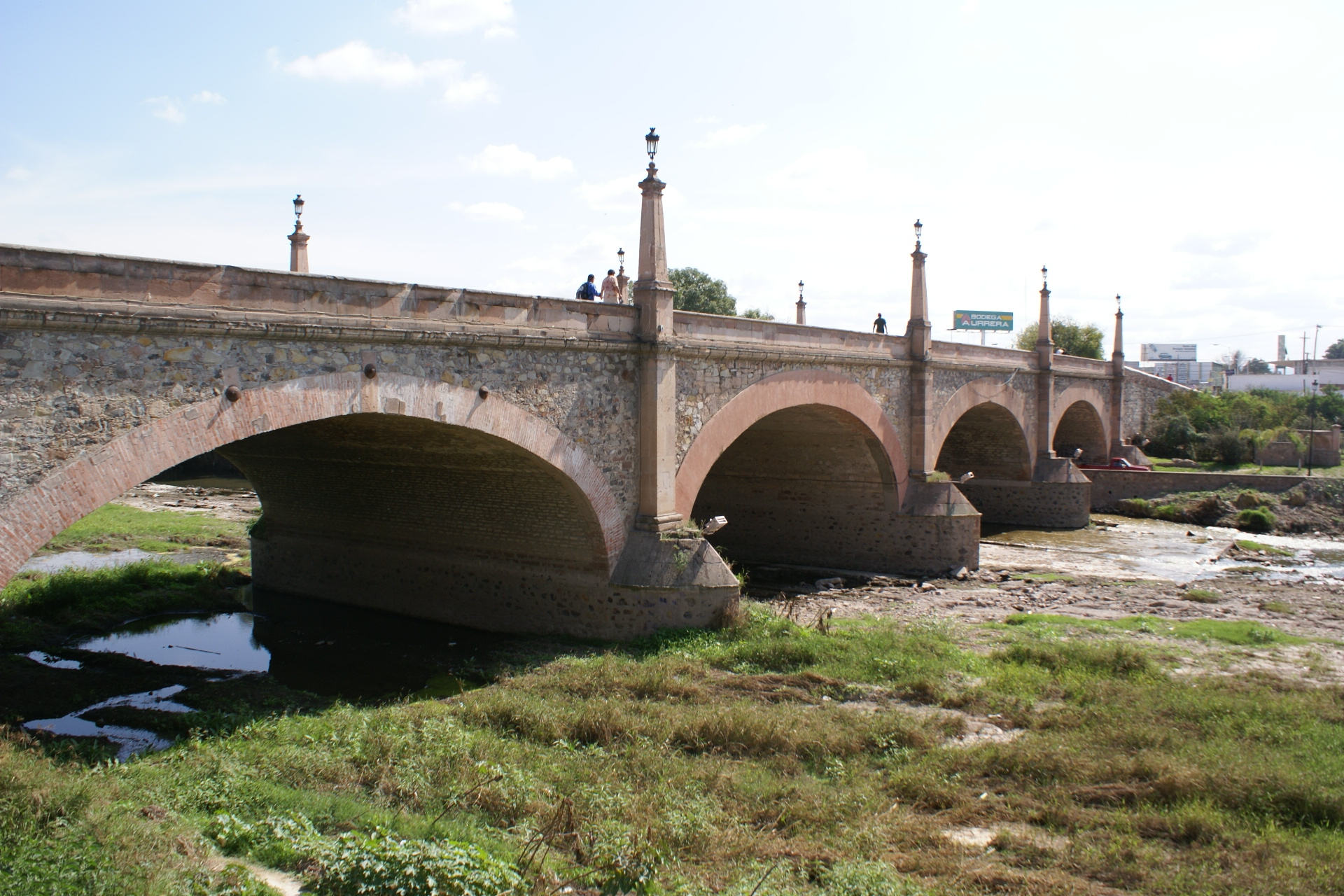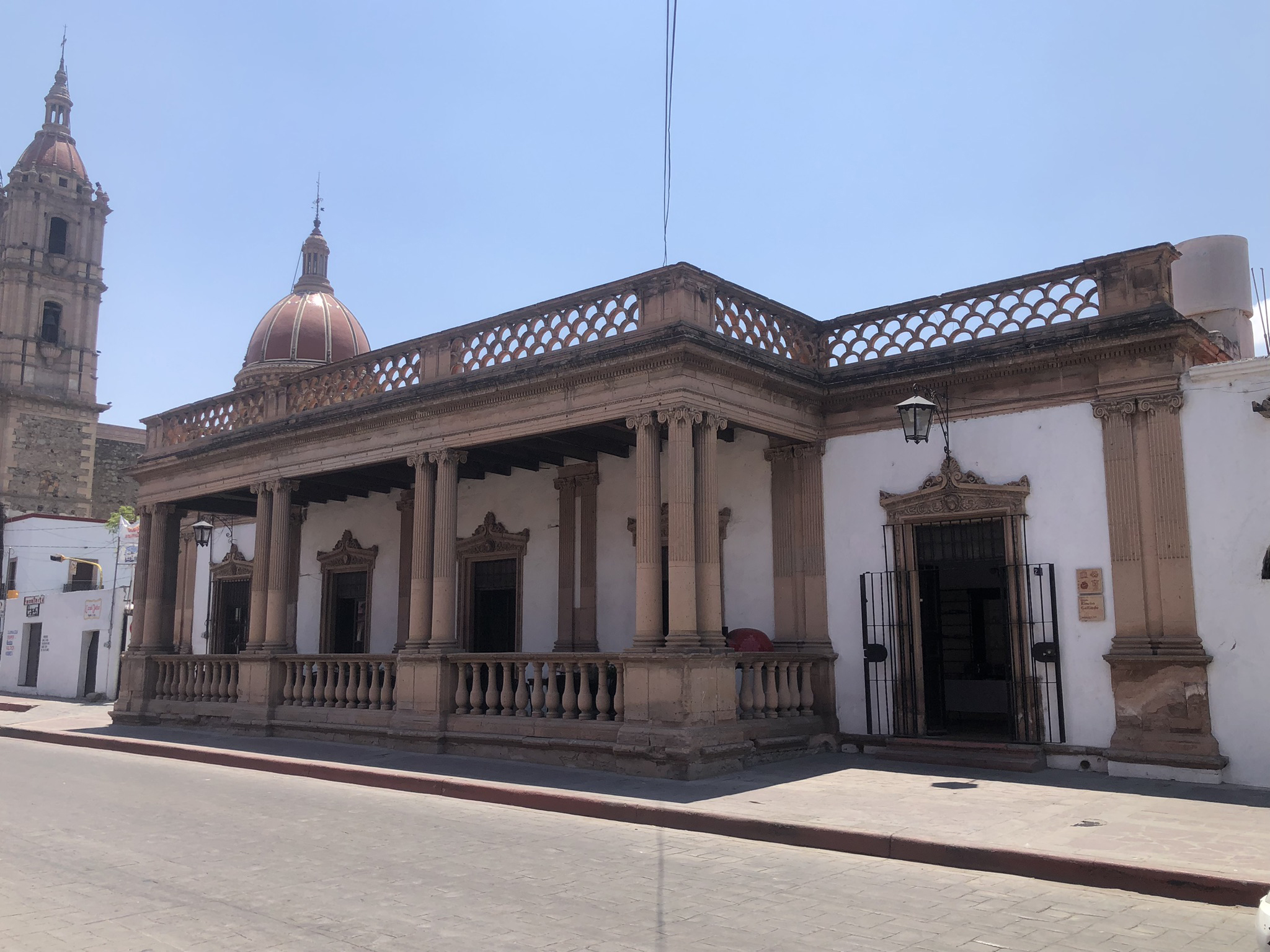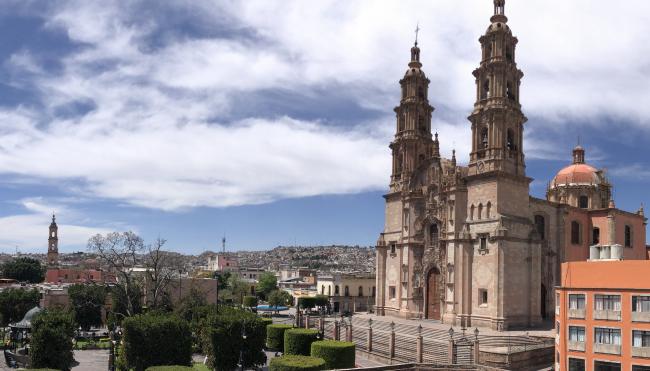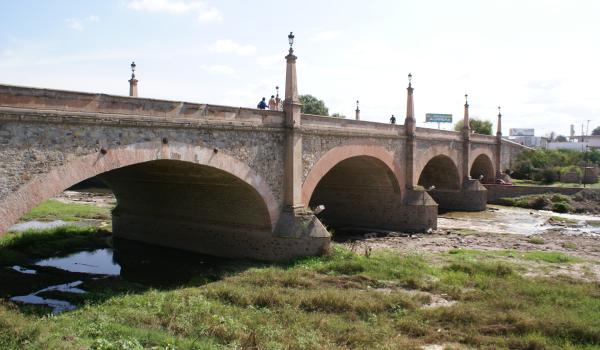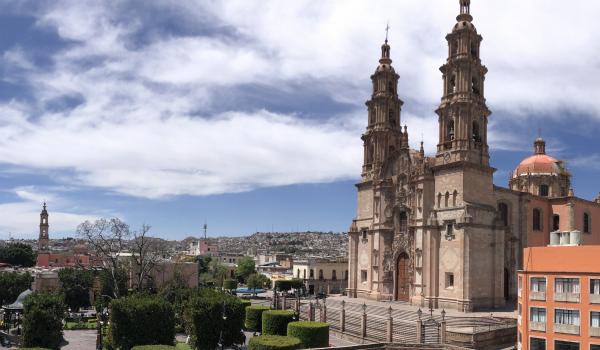Centro histórico de Lagos de Moreno y puente
Route element
Centro histórico de Lagos de Moreno y puente
The historic center of Lagos de Moreno is located northeast of Guadalajara, the capital of the state of Jalisco. During the second half of the 16th century, this area was turned into a war zone by the Chichimeca people. In response, as part of strategies for pacification and protection of the Spanish settlers, Viceroy Luis Velasco ordered the construction of forts, garrisons, or bulwarks at strategic points along the Camino Real de Minas. These fortifications housed contingents of soldiers who would patrol the road and accompany travelers to defend them from Chichimeca attacks.
The importance of the haciendas and towns established in the Llanos de los Chichimecas led to the creation of a branch of the Camino Real through these areas, which bifurcated towards Guadalajara and Zacatecas. Along this latter branch, important settlements were established every 50 or 60 kilometers. For this reason, the Royal Audiencia of New Galicia ordered the founding of a Spanish town in the Llanos Chichimecas, which was named Villa de Santa María de los Lagos. It was founded on March 31, 1563, with an essentially defensive purpose.
The geographical characteristics of the region provided excellent food resources and means for the development of prosperous livestock and agriculture, making it a supplier to major mining centers such as Guanajuato, San Luis Potosí, Comanja, and Zacatecas. This elevated the villa of Lagos to greater prominence, leading it to transition from a villa to an Alcaldía Mayor in 1615. This event facilitated the arrival of educated men, judges, and other families who shaped the architecture of the villa.
In 1685, the Convent of Our Lady of Mercy and the College of San Lorenzo were founded, and just five years later, the construction of the parish church began. In 1756, the convent of the Poor Capuchins of Lord Saint Joseph was founded, and in the last decade of the 18th century, the construction of the new parish church of Our Lady of the Assumption began. The Temple of Our Lady of the Rosary, the Town Hall, and the main inns serving as lodgings such as the Inn of Mercy, Jesus María, and Solitude were also products of this eighteenth-century construction activity
Although the region's water resources were favorable for agriculture and fishing, during the rainy season, this posed a problem for travelers on the Camino Real de Tierra Adentro. The flooding, especially from the Lagos River, and the lack of bridges often forced them to wait several days to cross. This situation necessitated the construction of a suitable and strong bridge capable of withstanding weather challenges. It wasn't until 1860 that a bridge was built to address this issue, although the project was fully completed in 1870 with the addition of parapets and paving.>
Given the lack of road maintenance during that time, the arrival of the railroad in 1883 connected Lagos de Moreno with Mexico City, El Paso, Texas, and all the states in between. This was seen as a hopeful opportunity for opening new markets.

